
Home | Pioneers | Contact Us | Copyright/Disclaimer
Monaro - Local Government
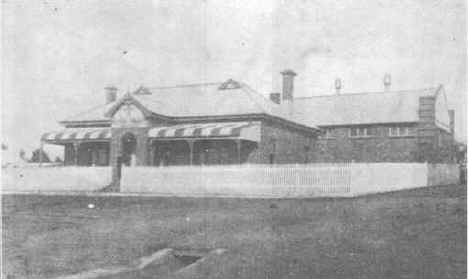
Council Chambers - Masonic Temple in the
background
Cooma Municipal Council
On 6th November, 1879, a proclamation was signed by the Governor authorising the
constitution of the Municipal District of Cooma, and on the following day, in a
supplementary Gazette, No. 397, reference is made to a petition signed by 88
persons, praying for the creation of a Municipality.
By a Gazette proclamation of 6th January, 1880, the election of Aldermen and Auditors for the newly incorporated Municipality was notified as being held at the Court House, Cooma, on Tuesday, 3rd February, 1880.
By a letter, No. 80/51, dated 7th January, 1880, addressed by Mr. Critchett Walker, then Under Secretary, Colonial Secretary's Office, to Mr. Frederick Blaxland, the latter was notified of his appointment as Returning Officer at such election, and authority was given to use the ballot boxes for the Electoral District, if occasion arose.
The polls on the date named resulted in the election of Messrs. Charles Solomon, Thomas Wren Faulkner, Isaac Albert Shannon, J. Hands, George William Spring, and David O'Rourke.
|
|
|
|
| Charles Soloman | David O'Rourke | Frederick Blaxland |
The first Mayor was Alderman Charles Solomon, his opponent for office being Alderman T. W. Faulkner. The voting being equal, the Returning Officer, Mr. Blaxland, gave his casting vote in favour of Alderman Solomon, explaining as his reason for so doing that Alderman Solomon had, at the election, polled a larger number of votes than Alderman Faulkner.
The first meeting of the newly-elected Council was held on March 8th, 1880, when Messrs. John James Howell and Peter Poidevin were appointed valuers and assessors, and their report was received on 11th May, 1880.
In June, Hewison's Hall was secured as a meeting place, and in August this was given up for a room at Mr. Thornton's.
The first code of By-laws was published in the Gazette of 22nd December, 1880.
The first rate was finally struck on 10th August, and Messrs. Clifford, J. E. Body, W. R. Hepburn, Cosgrove, Pratt and Capt. Battye, Justices of the Peace, were requested to attend and adjudicate on appeals.
The first Revison Court was fixed for 24th January, 1881, on which date Mr. C. Solomon (Mayor) and Messrs. D. O'Rourke, T. W. Faulkner, G. Spring and I. A. Shannon, were nominated trustees of the Town Common, whilst at the same time the Mayor and Aldermen O'Rourke and I. A. Shannon were appointed Trustees of the Market Reserve, or Recreation Ground (now Centennial Park).
The first available record of valuation is that of Messrs. E. M. Mawson and E. Hewison. received on 5th April, 1881. By it the improved capital of property within the area is shown at £8899/6/-, and the unimproved value as £110,369/10/-.
In March, 1880, the Council requested the Postmaster-General to appoint a letter-carrier, but acquiescence in this was not granted till 2nd May.
In the same month the Council resolved that any verandahs erected on the 16ft. footpaths should not be more than 12ft. wide, the remaining 4ft. being reserved for tree-planting. This accounts for the fact that to-day so many verandahs in the town stand back from the kerbing.
As from 3rd August, 1882, the Council removed to the School of Arts Buildings, in Bombala Street. They had some trouble with the committee of the institution and on March 6th, 1883, became tenants of a room in Joseph Hain's newly-erected premises in Massie Street, the occupancy of which was continued until, in 1912, the Present Council Chambers were erected by Henry Bray, at a cost of approximately £1800.
In 1884 the population inside the municipal area appears to have been over one thousand, but a proposal to petition for three extra Alderman on that account lapsed.
The number of aldermen was increased to nine by the election of three extra aldermen on 11th April, 1888.
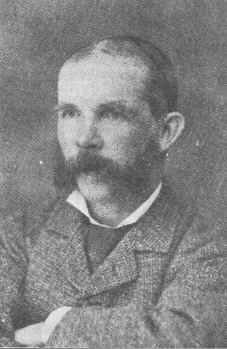 |
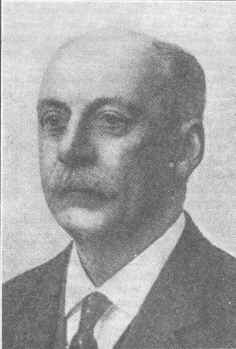 |
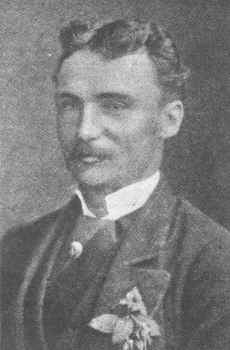 |
| George Henry Spring | Charles F Welch | J E Body |
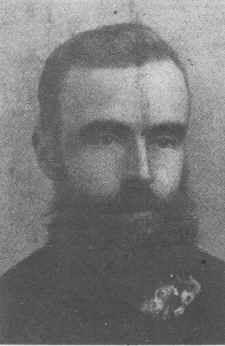 |
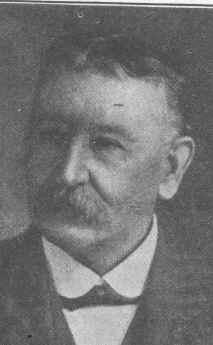 |
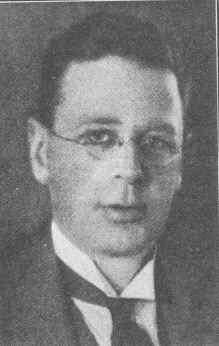 |
| Henry Gunning | James Hugh Montague | John Arthur Perkins |
The gentlemen who have held the Mayoral Chair since the
incorporation of the Municipality, and their respective terms of office, are as
follows:
Charles Solomon - 1880 and 1882.
David O'Rourke - 1881, 1884, 1887.
George Henry Spring - 1883 and 1885.
Charles F. Welch - 1886, 1890, 1891, 1892, 1894.
Thomas W. Faulkner - 1888 1889, 1895, 1896, 1897 (1/2), 1898.
J. E. Body - 1893 (1).
Henry Gunning - 1893 (1/2)
David Montgomery - 1897
David Jeffrey - 1899, 1905.
George Kaufline - 1900, 1907, 1909, 1910, 1915, 1916, 1917.
Wilfred Willmott - 1901.
James Hugh Montague - 1901, 1913, 1914.
Lewis Shannon - 1902, 1903, 1906, 1918.
John Arthur Perkins - 1904, 1998.
John Alexander Sellar - 1911, 1912.
Frederick Blaxland - 1919, 1920, 1921, 1922.
John Henry Rogan - 1923, 1924, 1925, 1926.
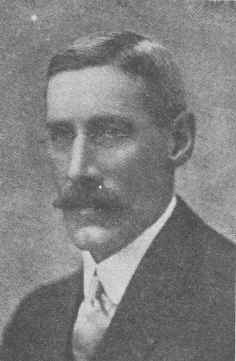 |
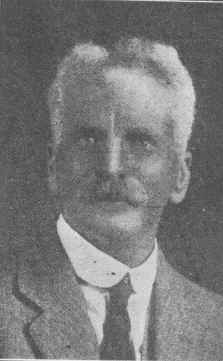 |
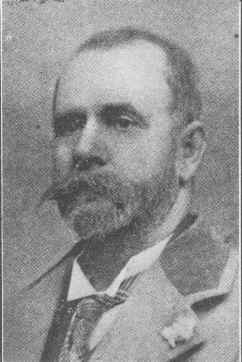 |
| John Alexander Sellar | John Henry Rogan | L Shannon |
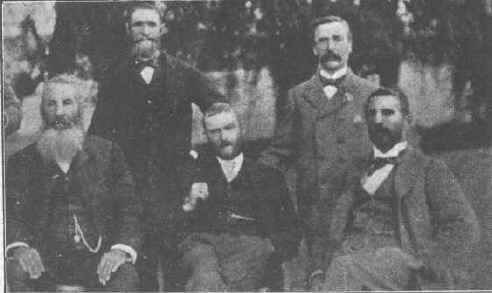 |
| A Mayoral Group Standing: D. Montgomery and D. Jeffrey Seated: T.W. Faulkner, W. Willmott and G. Kaufline |
TOWN CLERKS, ENGINEERS and GANGERS since incorporation have been:-
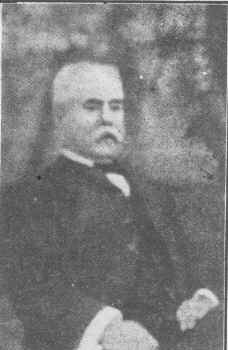 |
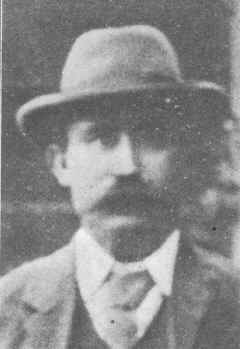 |
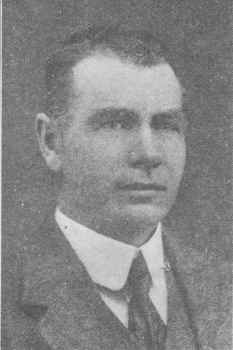 |
| H H MacDonnel | E Searson | W E Bannister |
1880 to 1882 - Edmond Hewison; also Engineer or Surveyor.
1882-83 - A. C. Llewellyn, Town Clerk; Charles Quilty, Surveyor.
1883-84-R. English, Town Clerk and Surveyor.
1884-94-Edmond Hewison, Town Clerk and Surveyor.
1894-98-H. H. MacDonnell, Town Clerk; John Reidy, Ganger.
1898-1910-E. Searson, Town Clerk.
1911-25-W. E. Bannister, Town Clerk; still in office.
John Reidy remained in the service of the Council as Ganger till 1919, when
Thomas Keefe was appointed. He resigned last year and was succeeded by Win.
Delaney.
INCOME AND EXPENDITURE.
There are no records available as to income and expenditure from 1880 to 1908: the only information procurable is from the annual estimates of Revenue and Expenditure as recorded in the Minute Books, and adopted in each year.
For the first year, the Income was estimated at £1,000, and the Expenditure at £706. The amount of the first rate levied, after being debated at several meetings, and deferred for solicitor's opinion as to legality, was eventually fixed at 8 1/2d. in the £ on the Assessed Annual Value, with 5% on the unimproved value of unoccupied lands. This should have produced a revenue of £755, approximately; but apparently only about £500 was collected in that year, as that is the amount set down in the estimates for the following year as the statutory endowment at the rate of £ for £. Coming down to the year 1906, when the old Municipalities' Act was replaced by the Local Government Act of 1906, and a complete change was made in the method of book-keeping and accounts, we still find that there are no records available until 1908. In that year there was only one Fund, in which all accounts were kept, and the total Revenue was £2414 and Expenditure £2142. The rate for that year was at 4d. in the £ on the Unimproved Capital Value of the land, which produced £1139.
For the year 1914, when the various accounts were kept under their respective Funds, the figures were as follows:
Income.
General
Fund
£1892
Street
Lighting
202
Sanitary
Fund
752
Water
Supply
1594
Sale Yards
Loan
111
------
Aggregate
£4551
Expenditure.
General
Fund
£1659
Street
Lighting
213
Sanitary
729
Water
Supply
1168
Sale Yards
Loan
22
------
Aggregate
£3791
For the year 1924 the figures were as follows:
Income. Expenditure.
General
Fund
£3095 £13301
Steet
Lighting
310
270
Fire
Brigade
130
120
Water
Supply
2293
1984
Electricity Works
3499
2184
------ ------
Aggregate
£9327
£7859
These figures do not disclose -the amount paid in purchase of
Assets, or the redemption of loans, etc.
WATER SUPPLY.
Drawn from the Murrumbidgee River, six miles distant, Cooma's water supply is one of the best in the State. The water is pumped from the river to a dam constructed on a hill overlooking the town, and is thence distributed by gravitation. The work in connection with water supply was commenced in 1911, the contractors, under the Public Works Department, being Hood Brothers. The works were practically completed in 1912, and the water supply became available in August of that year. The first house in Cooma to be connected was "Dagworth," then the property of Mr. William Rix.
The cost of the Water Supply Works was:-
| Pumping Station and Plant Reservoir Mains Total |
£3717 |
|
In 1914 additional works were installed as follows:
|
Engineer's Cottage Additional Mains Total |
£547 |
|
In 1917 further additional works were put in as follows:
| Mains Reservoir 1996 Other Plant392 Total.2939 |
£551 |
|
|
Making a total cost of 21537 On this amount there has been repaid Leaving the debt at present |
£21537 |
This amount is required to be repaid by regular annual
instalments, which will extinguish the debt in 50 years. It is interesting to
record that in the year 1891, Mr. E. Hewison, Town Clerk and Engineer, who had
enquired into the matter of supplying Cooma with water from the Old Mill, and
had taken the necessary levels and data,
reported to the Council adversely to the proposal, and said that in all
probability the future scheme of water supply for the town would be to bring the
water by means of steam pumping from the Mittagong Bridge.
In 1913 the quantity of water pumped was 14,500,500 gallons.
In 1923 the quantity of water pumped was 28,000,000 gallons
STREET LIGHTING.
It was not until 23rd February, 1892, that a system of street
lighting was adopted. On that date the Mayor (Mr. C. F. Welch), before a large
concourse of people, lit at O'Rourke's (now Murphy's) corner, a 65 candle-power
Rochester kerosene lamp, and from then on the town was lit under the direction
of the Council.
In 1906 acetylene gas was brought into use as a means of
street lighting, and this continued, with a break of about 18 months during the
war when carbide became practically unobtainable. A small number of benzine
lamps was then made use of until, in May, 1922, the completion of the
electricity works, enabled the present system to be brought in. There are now in
use 9 lamps of 200 c.p. and 55 of 60 c.p. each.
CATTLE SALE-YARDS.
In 1912 a proposal to establish Municipal Saleyards was carried into effect, the capital Cost being 420 pounds The loan in this connection was paid off in 1915.
ELECTRICITY WORKS.
The first proposal with regard to Electric Lighting for Cooma was submitted to the Council in November, 1892, by W. P. Gunn and I. Waddington, who asked for a franchise. Nothing was done, however, in this direction until 1912, when W. P. Humphreys submitted a proposal for a franchise, and an agreement was entered into between the Council and that gentleman, but was not carried into effect. Later, in 1913, S. P. Woodford entered into a similar agreement, but that also fell through. In 1914 the Council decided to proceed with the matter of installation itself, and Mr. J. E. Donoghue was engaged as Consulting Engineer and submitted a report. The War then intervened, making it impossible to proceed owing to supplies of materials being unobtainable, and it was not until 1919 that the matter could be revived, and Mr. Donoghue's scheme was carried into effect at a cost of £10,000. The works were completed in May, 1922, when the lights were switched on for the first time at a Continental held in Centennial Park in aid of the funds of the Cooma Hospital. It very soon became apparent that the plant installed would not be sufficient for the load it would be called upon to carry, and in April, 1923, steps were taken to increase the capacity of the plant. The additions were completed in June, 1924, at a further cost of £3,500 the loan being negotiated locally by the issue of debentures bearing interest at 6 1/2 pounds per cent.
In 1923 the total number of units generated was 68,825; in
1924, 74,630; and in 1925, 90,384.
BUILDINGS.
The record of buildings erected prior to 1920 is not
available. From that date onward the figures are as follows:
| New Buildings. Alterations and Additions. |
| 1920 1921 1922 1923 1924 |
No. Cost. |
No. Cost. |
FIRE BRIGADE.
The town has a Fire Brigade subject to the provisions of the Fire Brigades' Act. Within the last three years land has been purchased and a small station erected thereon. The equipment is a Reel only.
CURTAILMENT OF AREA.
Within a comparatively few years after the incorporation of the Council, the view seems to have been held that the Municipal district was too large.
Throughout a period of years the matter was referred to at more or less infrequent intervals, but no definite steps towards obtaining a reduction of area was undertaken for some very considerable time. The town proper was surrounded by both permanent and temporary common, portions of which, under the policy of the Lands Department, were subdivided and set apart in small areas for workingmen's homes. These blocks, however, were not taken up by those for whom they were primarily intended, and the result was that they were gradually acquired by holders of comparatively large areas. In 1921, the general rate assessed by the Council of the Municipality upon such of these lands as were within its boundaries, amounted to 61d. in the £, whilst in the immediately adjoining Shire lands, a rate of 2d. in the £ only was imposed. A petition was prepared, a number of signatures obtained thereto and the document, which asked that portions of the municipality should be merged into the Monaro and Dalgety Shires respectively, was sent on to the Local Government Department, which in turn forwarded it to the Councils of the shires concerned with a request for an expression of their views. These latter were so unfavorable that the department then intimated it would not proceed with the matter.
The agitation was revived in 1922, and finally an inquiry was held before the Local Land Board at Cooma, early in 1923.
At the hearing the Cooma Council was the petitioner, the Councils of Manaro and Dalgety opposing the request, which meant the severance from the Cooma Municipality of 12,960 acres, of which 8,060 acres would be absorbed by the Manaro Shire, whilst 4,900 acres would be added to the Dalgety Shire. The rates receivable by the Cooma Council in respect of the area sought to be transferred amounted to £339 and £109 respectively. The Monaro Shire was asked to take over 13 1/2 miles of roads and the Dalgety Shire five miles. The number of electors and ratepayers in the areas sought to be transferred was only 44. The unimproved capital value of the land to be transferred to the Manaro Shire was £12,251 and to the Dalgety Shire £3784.
The Land Board recommended the granting of the petition and
the severance of the area, stating that this would not impose any appreciable
additional financial liability on the comparatively large number of ratepayers
of the Manaro and Dalgety Shires, who were the principal users of the roads
which passed through the areas proposed to be detached.
The severance was accordingly allowed, and the Cooma Municipality which, prior thereto, had an area of 16,800 acres of land, with a total
unimproved capital value approximately of 70,841 pounds retained only 3,840
acres, with an unimproved capital value at the time of severance of £54,806,
and lost in rate revenue alone, without taking into consideration any proportion
of main roads grant, the sum of £448 leaving its revenue from general
rates somewhere in the vicinity of £1600.
The area treated of in this Souvenir has completely within its boundaries two Shires - Monaro and Dalgety - the first extending from Michelago to the western boundary of the Municipality, and the latter running west from such boundary.
The following brief particulars of the Shire are given :-
Headquarters, Cooma.
Area, 1,872 square miles.
Population,
2,610.
Electors, 781.
Length of Roads, 772 miles.
Main Roads, 85 miles.
First Meeting: 6th December, 1906.
First Elected Council: Wm. Cosgrove, John Jardine, T. W.
Faulkner, William Crisp, David Brodie, 0, E. Silk.
Clerk: H. H. Solomon-from incorporation to date.
Presidents: 1907, Wm. Cosgrove; 1908-15, John Jardine;
1916-19, 1923, 1926, G. S. Goodwin; 1920, John Mooney; 1921, T. J. Kelly; 1922,
Edward Crisp; 1924, A. J. Agnew; 1925, John Evans.
Engineers: D. Armstrong, J. Hope, C. J. McCormack, C. W.
Bedford and R. J. Wagener, the latter still holding the appointment.
The Monaro Shire has one Urban Area established at Nimmitabel,
and there it has brought a sanitary system into operation.
The comparative land values revenue and expenditure over a period of years are shown as follows:
|
1907. U.C.V....
£521,824 Revenue
4,028 |
1917. |
1924. |
The Monaro Shire is the possessor of a road making Plant, the original cost of which in 1912 was 2500 pounds
Headquarters, Berridale.
Area: 2,305 square miles.
Population:
4,500
Electors: 897.
Length of Roads: 600 miles.
Main Roads: 125 miles.
First Meeting: 20th December, 1906.
First Elected Council: H. C. Merritt, Samuel
Mackay, G. W. Mackay, J. T. Delany, R. Craig, D. Crisp,
Clerks: D. J. O'Rourke,
1906 to death, in 1923 H. J. Charles, 1923 - still in office.
Presidents: H. C. Merritt, 1906-08; David Crisp, 1909-11,
1913; G. Barry, 1912-1914; J. R. Deegan, 1915-17, 1919-20, 1922-24-26; Robert
Craig, 1918; A. Wallace, 1921; G. W. Mackay, 1925.
Engineers: W. Rennix, 1906-8; P. Caro, 1908-9; - Bell, 1909-11; - O'Neill, 1911-13; J. W. Barratt, 1913-15; H. Burmeister, 1915; R.
Thornton, 1915-18; T. F. Birrell, 1918; J. J. Muir, 1918-19; R. G. Payten,
1919-21; J. Moroney, 1921; P. H. M. Macintosh, 1922-1925; H. G. Dee, 1926.
Comparative land values, revenue and expenditure over a period of years are shown as follows:
|
|
1907. |
1917. |
1924. |
The Council has a road-making plant which has proved effective.
Transcribed by Pattrick Mould, May 2003, from the book "Back to Cooma" Celebrations, Felix Mitchell, 1926, p91-98
|